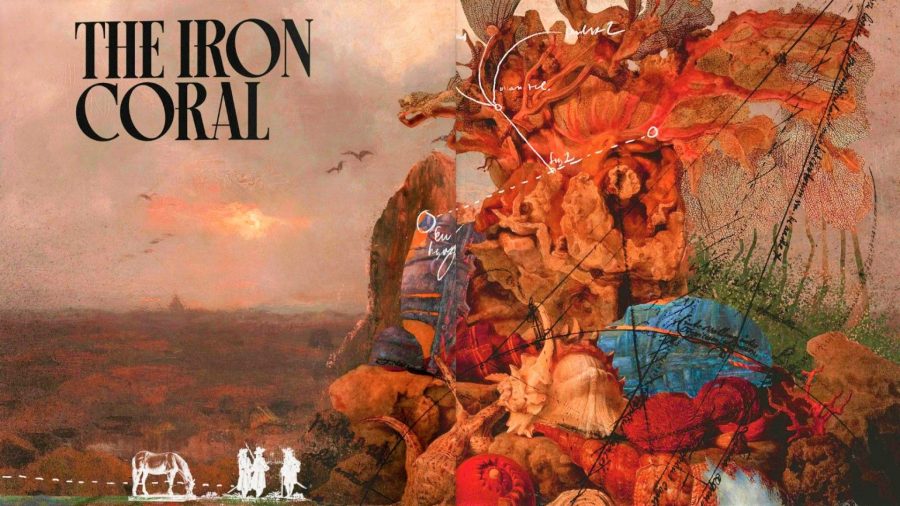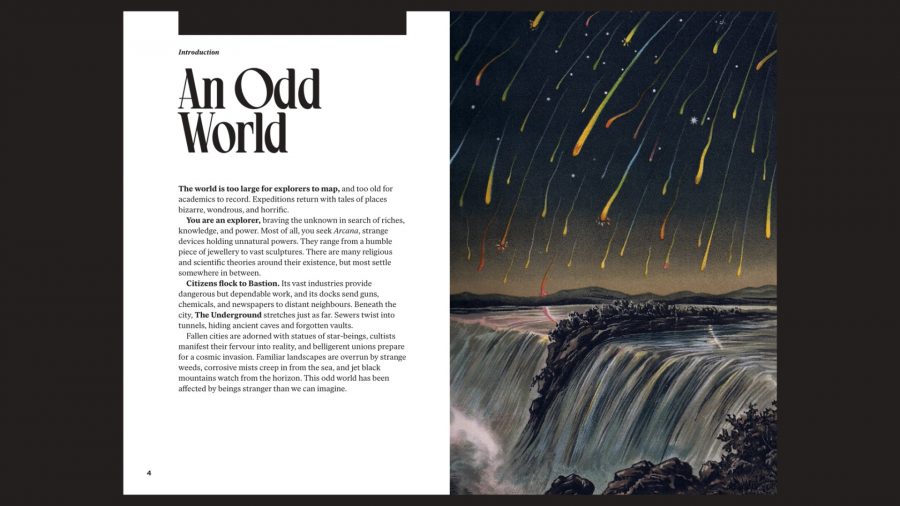If games like D&D and Pathfinder were fiction books, Into the Odd Remastered would be a poem. It’s extremely concise, has strict limitations, and it’s bursting with imagery to decipher. The final product is something quite beautiful – but it’s not going to be for everyone.
Before we get on Into the Odd’s cryptic, artistic level, let’s talk about the tangibles. Into the Odd Remastered is a Kickstarter-funded revamp of the original 2014 tabletop RPG. Writer Chris McDowall (also of Electric Bastionland fame) has teamed up with publisher Free League and Mӧrk Borg graphic designer Johan Nohr to create an edition with more polish and more otherworldly content. Kickstarter backers are already receiving their copies, but the wider release date for the book is to be confirmed.
As a reviewer, I’m entering Bastion (the RPG’s industrial-age cosmic-horror-dipped setting) for the first time. Some of my thoughts will likely feel familiar to long-time fans of the game, but I hope to highlight some points that’ll also help you decide whether this is a book worthy of your shelves. Personally, I’m glad to have experienced Into the Odd – but it feels more like an art piece than a game I can sink my teeth into long-term.
Let’s talk about Johan Nohr. When I say the name Mӧrk Borg, I’m expecting both fiendish cries of delight and guttural groans of fatigue from the TTRPG community. These days, for every person applauding its beauty and creativity, there’s another criticising its lack of readability (though they may be sated somewhat by the recent plain-text version).
Nohr’s unique sense of style is kept firmly separate from the text in Into the Odd. Despite this, it still manages to more than serve its purpose. One of the most impressive feats of Nohr’s graphic design in recent Old School Renaissance (OSR) books is it doesn’t simply illustrate the RPG – it adds to it.

OSR books like Into the Odd are famously minimalist when it comes to the rules, lore, and player hand-holding that pad out your typical 300-page sourcebook. Into the Odd gives you, at best, a few pages to learn about the city of Bastion and its surrounding areas. Everything else is down to interpretation, and this is what makes the visual design shine – the marbled cover sheets, lithograph-style illustrations and odd geometric etchings often told me more about the game’s world than McDowall’s writing.
If you’re already a fan of the 2014 RPG and you’re looking for a piece of art for your TTRPG collection, this book is a must. If you’re new to the RPG in the first place, I’m not as confident in my recommendation.
Simply the best: A guide to the best tabletop RPGs
I’m adamant this book will be a masterpiece for the right person, and I firmly believe a lot of the limitations are deliberate design choices rather than oversights. Still, for Into the Odd to be the game it wants to be, it has to shut a lot of players out.
I don’t believe Into the Odd is suitable for new TTRPG players, and I almost wish the game would fully commit to this fact. It offers a single page (two paragraphs, to be specific) of definition for anyone new to RPGs – plus a comedic but tonally odd example of how RPGs play around 20 pages later. The advice for new Game Masters (‘Referees’, as they’re called in this system) is similarly sparse.

For those in the world that have only just learned about D&D and are dipping their toes into the hobby for the first time, sometimes that extra 20 pages of hand-holding is necessary.
Starting steps: How to play Dungeons and Dragons for beginners
Into the Odd is committed to minimalism in all other areas, too. This is a book that openly admits to prioritising “quickness over realism”. This is a book that asks players not to care about details like how long a round of combat lasts for. This is a book that gives very few fucks about crunch. Again, none of this is necessarily bad, but the aggressive min-maxers of more complex games may hesitate to enter Bastion.

This ‘quickness’ ideology led to a few other design choices that depart from the TTRPG norm. For example, the character you play is chosen for you at random depending on the ability scores you rolled – initially this shocked me, as one of my favourite parts of an RPG is the time (often hours) you spend crafting a playable character.
There’s also no real story to the book’s starter adventure. From a DM’s point of view, it reads more like the map of a carnival horror maze than an RPG narrative. It’s a visceral horror maze filled with delicious detail, but you’ll have to scratch any itch for coherent narrative with your own skills.
I’ve framed many of these points as criticisms of Into the Odd, but I don’t fully see them that way. In fact, I’m impressed by the game’s design choices. I don’t feel I have what I need to enjoy a long-running campaign, but as a short-lived game (or, dare I say it, a book to be read rather than played), Into the Odd’s design is excellent.
Running the show: Tips for how to be a DM
Being rushed into a strange and unexplainable world and playing a character you’ve barely been introduced to, encourages you to roleplay in ways you may never have considered before. A lack of direction gives Game Masters the kind of freedom they often crave when running pre-written adventures. Like writing poetry, the constraints force you to be more creative.
Bastion combines the smog and oppression of industrial-age London with the unspeakable terrors of a Lovecraft novel. I can believe this is a world where your choices don’t matter, and you never truly understand what’s going on around you. Into the Odd commits to a vision where the game’s mechanics almost perfectly match its flavour – but I won’t pretend it’s a book every player will enjoy.
Source: Wargamer




